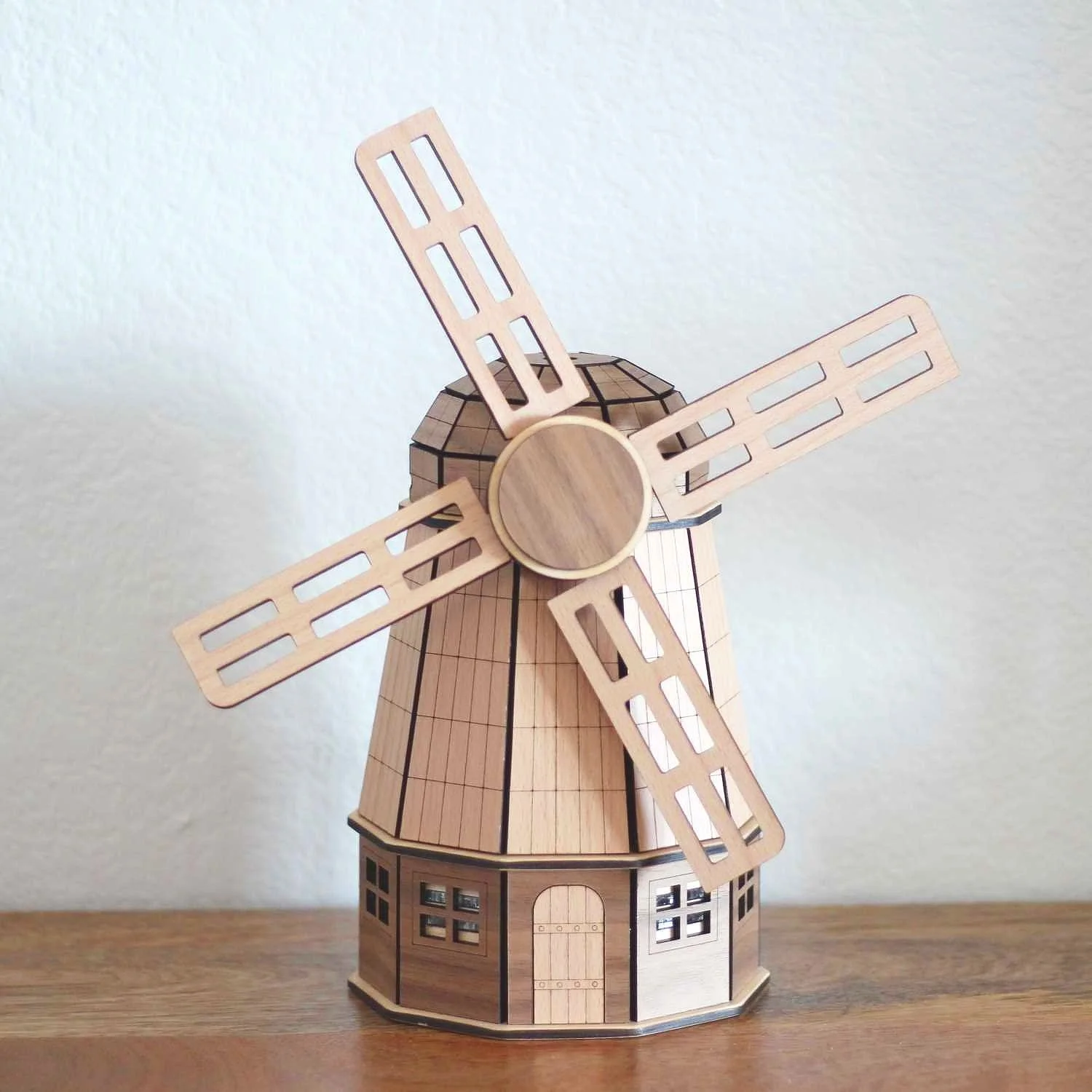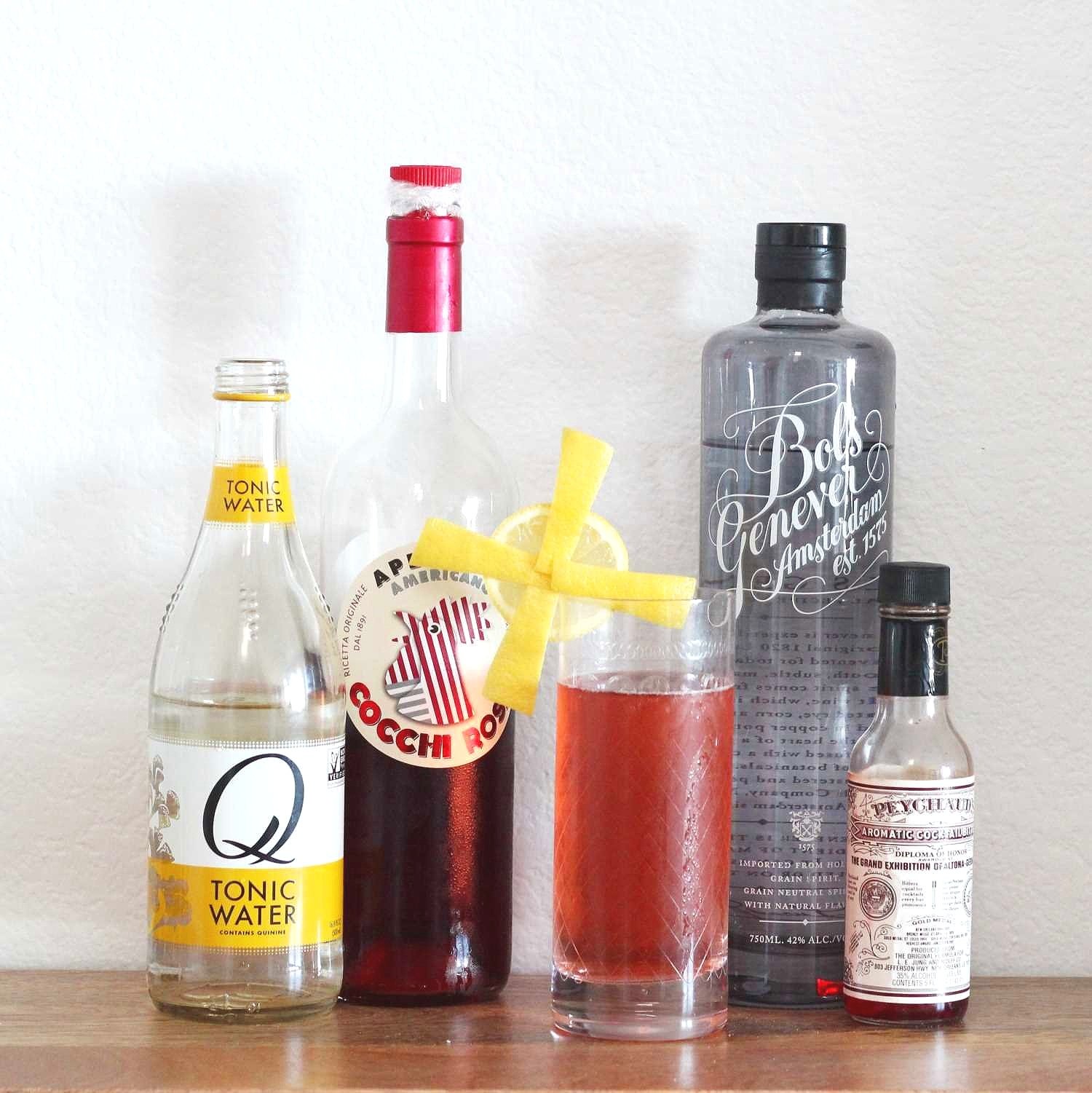Dutch Treat
Windmill
Dutch puzzle designer Benno Baatsen (nom de puzzle de Grote) is pretty pleased with his newest creation, a nod to his homeland and a combination of many of his favorite puzzle styles. From Benno, “When I design a new big puzzle box most of the time I think it’s my best one yet. When you’re working for weeks on a project you automatically get really fond of it. But this box feels different. I’ve had it on my desk for over a week now and I can’t put it down. I open and close it multiple times a day. This truly is the best box I’ve made until now.”
Windmill by Benno de Grote
Benno has created a beautiful sequential discovery experience hidden inside an impressive windmill, complete with expansive spinning sails. He took elements that he liked most from his Small Cabin puzzle, incorporated feedback from friends and customers, and put it all into the Windmill. He loves finding himself surrounded by many, many parts at the end of a long puzzle journey, so included many, many items to find here as you make your way through, finding hidden rooms, tools, supplies needed for the farmer to make the flour (the original purpose of a windmill, lest you forgot) and even a few typical creatures one might find inhabiting such a structure.
adoorable detail
Benno also loves the look of this one. “I’ve designed over 100 puzzle boxes in the last 15 years of my life starting at age 10. Almost all of these boxes have a simple cube shape. I only recently got my own laser cutter which allowed me to make prototypes very easily. This makes it easier to make more complex boxes and mechanisms. Playing with new forms allows for a lot more creativity. I also get a lot of positive feedback on these new boxes which really motivates me to make more of these unusual designs. “
just milling about
Benno is also a true puzzle designer, having a real passion for bringing his ideas to life. His puzzles can be quite difficult, and it seems that is because he loves the design process involved in creating such things. For Windmill, “it was a real challenge to design it. There are lots of small details which took multiple approaches before they finally worked well. It is very easy to design a difficult way to make a lock work. It is a lot more difficult to make a simplistic design while [retaining] the functionality. As a puzzle box designer you don’t get to experience how to solve the box because you already know how the mechanism works. The real challenge for a designer lies in creating a simple to make yet effective mechanism. This box had me pulling at my own hair while redesigning parts over and over again. It was the first box I designed that truly made me thankful for all the complex math I learned in high school. The amount of trigonometry that was needed to design the upper part of this puzzle box was staggering. I really liked the challenge, but I’m glad it’s over.”
eye see you
Made from Benno’s typical high quality materials, Birch wood for the main structure with Beech and Walnut veneer, the Windmill looks great for a laser cut product. It’s not as difficult as the Small Cabin, which is a very hard puzzle, and that actually makes the Windmill much more approachable and enjoyable. There are hidden things to be found fairly quickly, but plenty to keep you guessing as well, which makes for a very nice balance. If there is a maze hiding somewhere (a feature commonly found in his puzzles), and I’m not saying there is, he may have taken all the feedback he has received to make something almost perfect this time, fully visible yet confusingly devious and fairly balanced. Windmill is a beautiful puzzle on, and with, many levels.
The Dutch Connection by Keifer Gilbert
Here’s a toast to “Tulip Town” and the Windmill which is perfect for the season. It’s a lovely spring sip twist on the classic gin and tonic with a few interesting ingredients, including one that ties it squarely to the Netherlands. Genever (pronounced with the hard accent on the second long “e”, like “Geneva”), a distilled grain spirit heavy with malt that can range from neutral to herbal in flavor, first appeared in the Netherlands as early as the fifteenth century. It is thought of as the predecessor to gin, because after the Dutch-Portuguese war of 1660, when it was introduced to England, distillers there tried to mimic the spirit but removed the malt and added juniper. Genever, like Champagne and Sherry, has an official “Protected Geographic Origin” limiting its legal production to eleven specific appellations. Whether you prefer the oude (old) or jonge (young) style, Genever is classically enjoyed neat in a tulip shaped glass filled to the brim!
a rose by any other name would taste as sweet
Phoenix bartender Keifer Gilbert created this refreshing highball by adding Genever to his favorite springtime drink, a Lillet Rose with tonic. The stronger spirit gives the light rose liqueur some backbone and interest while maintaining the drink’s refreshing vibe and lower abv profile. Keifer himself doesn’t drink at all anymore, but maintains the spirit of hospitality inherent in the industry and symbolized by the pineapple tattoo on his arm (a common badge of the profession). Low abv cocktails are an ideal way to balance the enjoyment of a well crafted drink with the desire to stay healthy and responsible. I’ll drink to that! Cheers.
tiptoe through the tulips
The Dutch Connection by Keifer Gilbert
1 oz Genever
1 oz Lillet Rose
3 dashes Peychaud’s Bitters
Tonic water
Build ingredients in a highball glass filled with ice and stir to incorporate. Grapefruit peel garnish (or a lemon windmill).
See more from this artist:
and enjoy more cocktails from the category







